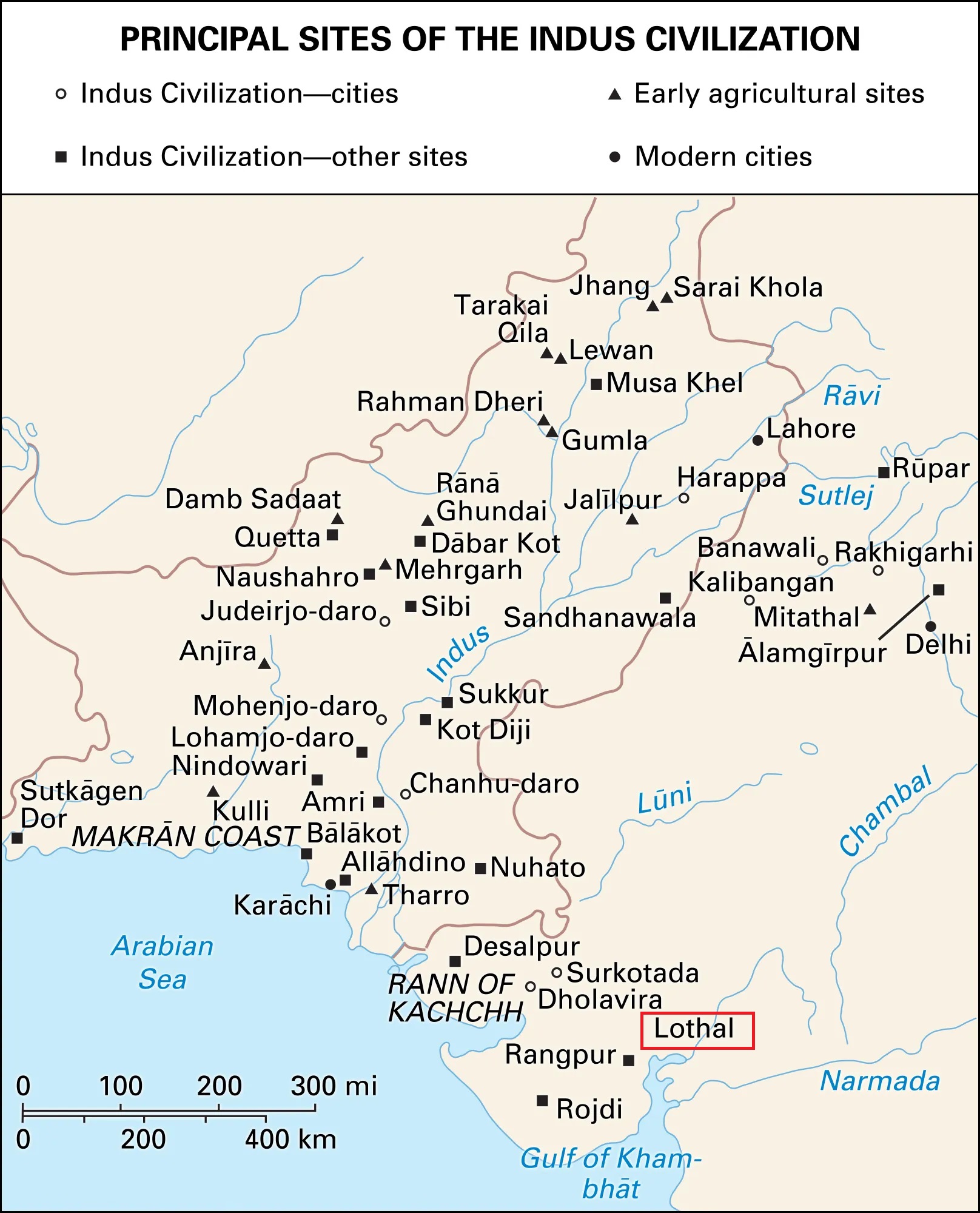Note4Students
From UPSC perspective, the following things are important :
Prelims level: Lothal and other IVC Sites
Why in the News?
A recent study by the Indian Institute of Technology-Gandhinagar (IITGn) has presented new evidence supporting the presence of a dockyard (222 x 37 metres) at Lothal, which was earlier debated.
Evidence of Lothal’s Dockyard
|

About Lothal:
| Details | |
| Location | Bhal region, Gujarat, India |
| Historical Significance | Built around 2200 BC; major trade centre for beads, gems, and ornaments |
| Name Meaning | “Lothal” means “the mound of the dead” in Gujarati (Similar to Mohenjodaro) |
| Discovery | Discovered by S.R. Rao; excavated from 1955 to 1960 |
| Port City Evidence | Earliest known dock; connected to the ancient Sabarmati River |
| Key Features | Tidal dockyard, marine microfossils, and a basin for sailing boats |
| Heritage Status | Nominated for UNESCO World Heritage Site in 2014; only port-town of the Indus Valley Civilization |
PYQ:[2021] Which one of the following ancient towns is well-known for its elaborate system of water harvesting and management by building a series of dams and channelling water into connected reservoirs? (a) Dholavira (b) Kalibangan (c) Rakhigarhi (d) Ropar |
Get an IAS/IPS ranker as your 1: 1 personal mentor for UPSC 2024

